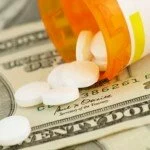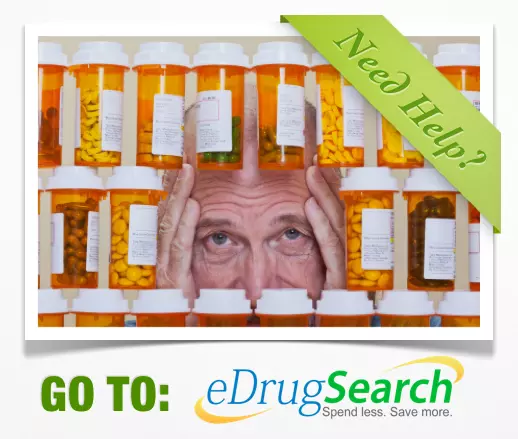Pain at the Pharmacy: What You Can Do About Unaffordable Prescription Drugs
According to IMS Health, a leading healthcare information and technology company, Americans spent $325.7 billion on prescription medications in 2012. Compare that to the amount they spent in 1990: about $40.3 billion. For sure, medications now represent a significant percentage of many people’s budgets. For some people who need medication, however, the costs of those drugs are simply too onerous to buy.
Dangerous Ways of Reducing Drug Costs
A recent “Consumer Reports” study detailed a phenomenon that probably seems obvious: When people can’t afford medications, they try to find ways to cut those costs. However, much of the time, those cost-cutting practices are dangerous. For example, they might:
- skip necessary doses of medication
- put off going to the doctor
- postpone medical tests
- share their prescriptions with others, or ask others to share their prescriptions with them
- slice their pills in half, and take half a pill at a time
Abandoning Prescriptions at Pharmacies
Another alarming trend pharmacists have been noticing in recent years is that of customers deciding to forego their prescription medicine. That is, when doctors prescribe certain medications to patients, they often neglect to mention how expensive those drugs are. Then, when patients discover the prices at pharmacies, they realize there’s no way that they can pay for them. Thus, these patients simply walk away.
In fact, doctors often write prescriptions without any sense of whether or not their patients can afford them. And 41 percent of the people who responded to the “Consumer Reports” survey said that their doctors routinely prescribed brand-name drugs over their more affordable generic counterparts.
Who Skips Medications the Most Frequently?
According to a recent study by the U.S. Centers for Disease Control and Prevention (CDCP), most of the people who skip their medications are under the age of 65, as people 65 and older can rely on Medicare to ease the costs of unaffordable prescription drugs. Further, and understandably, the cost of prescription drugs is a particularly pressing problem for people with low incomes and people who do not have health insurance. Indeed, about 25 percent of people between the ages of 18 and 64 have not obtained the medicine they need because they cannot afford it. In addition, about 20 percent of people living at or below the poverty line have likewise avoided filling their prescriptions.
When large numbers of people skip unaffordable prescription drugs, what are the effects on society as a whole? The number of seriously sick people rise, and emergency rooms therefore become much more crowded over time. The rates of otherwise-treatable heart disease, in particular, go up substantially. And many of the people in those emergency rooms are uninsured, which means healthcare costs will probably climb for everyone.
Cutting Prescription Costs Safely
However, if you find yourself worried about the price of your medications, be aware there are safe measures you can take. For example:
- Ask your doctor to prescribe a cheaper drug. Indeed, 20 percent of Americans, across the spectrum of ages and incomes, currently request of their doctors cheaper prescriptions, according to the CDCP study.
- Comparison shop. Researchers at “Consumer Reports,” for instance, found the same quantity of Lipitor being sold for $150 at CVS and $17 at Costco.
One of the most effective ways of comparing drug prices — and one of the easiest — is to go online and search for the drug you need. A great website for doing so is eDrugSearch.com. Not only is eDrugSearch.com a free portal for finding the cheapest prescription drug prices on the market, but it ensures that you’ll obtain medication that is completely safe to take.
About this Angie’s List Expert: Cary Byrd is the president and founder of eDrugSearch.com. Based in San Antonio, eDrugSearch.com is a free cost comparison engine that helps consumers get safe access to affordable medications and advocates licensed Canadian pharmacies as a widely accepted alternative.
Related Posts
- Obama’s Secret Trade Deal Could Cause Huge Rise in Drug Prices Worldwide
- The Shocking Truth Why Prescription Drug Prices Are So High
- How to Get Free Prescription Drugs or Low-Cost Prescription Medication
- How a Canadian Pharmacy Can Help You Offset Drug Price Hikes
-
 How to Get Prescription Medication Without Health Insurance
How to Get Prescription Medication Without Health Insurance
-
 Merck and insurance companies at cross-purposes over Gardasil
Merck and insurance companies at cross-purposes over Gardasil







-
-

-
How to Safely Buy Prescription Drugs Online from Cary Byrd on Vimeo.
-
Our Healthcare100 Ranking
-
Search Blog Posts
-
Archives
-
Trending Content
-
Blogroll
- Bullet Wisdom
- Christian Social Network
- DrugWonks.com
- Eye on FDA
- GoozNews
- Health 2.0
- In the Pipeline
- Jesus Christ Our King
- Kevin, M.D.
- Pharm Aid
- Pharma Marketing
- PharmaGossip
- Pharmalot
- San Antonio Asphalt
- San Antonio Life Insurance
- San Antonio Pressure Washing
- The Angry Pharmacist
- The Health Care Blog
- The Peter Rost Blog
- World Vision
-
Tags
adverse drug reactions big pharma Canadian drugs canadian pharmacies canadian pharmacy consumer reports craig newmark divine healing Drug costs drug prices Drug reimportation eDrugSearch.com FDA Fosamax Generic drugs healing scriptures Health 2.0 healthcare100 healthcare reform Hypertension Jehova Rophe Jesus Christ Lipitor Medi Share Metformin miracles online pharmacy dictionary online prescriptions osteoporosis peter rost Pharmacies pharmacists pharmacychecker Prescription drug coupons Prescription drugs prescription medication Proverbs 3:5-8 reimportation relenza Roche saving money swine flu Tamiflu The Great Physician The Lord our Healer -
Recent Comments
- thinking on Crestor, Lipitor, or Zocor – Which statin is right for you?
- carol haslam on Reclast’s “jaw problems” caused by too many warnings, spoken too quickly?
- Seniors on Prescription Drugs: How to Promote Safety | eDrugSearch Blog on How to Report Adverse Drug Reactions
- Seniors on Prescription Drugs: How to Promote Safety | eDrugSearch Blog on How to Check Prescription Drug Interactions
- Ammymickens on CVS drug prices takes on Wal-Mart’s generic drug prices — with a gimmicky twist


